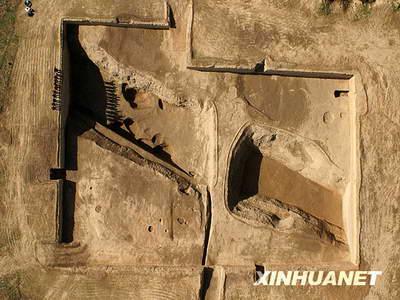Source: Xinhua
01-25-2009 15:58
Special Report: Tech MaxArchaeologists have unearthed the earliest man-made cave houses and privately-owned pottery workshops in China which date back 5,500 years.
After four years of excavation, a row of 17 cave houses were found on a cliff along the Jinghe River in northwest China's Shaanxi Province, Wang Weilin, deputy director of the Shaanxi Archaeology Institute and chief archaeologist of the excavation, told Xinhua.
 |
| An undated handout photo from the Shaanxi Archaeology Institute shows a bird view of the Yangguanzai remains in northwest China's Shaanxi Province. Archaeologists have unearthed the earliest man-made cave houses and privately-owned pottery workshops in China. |
They were built between 3,500 to 3,000 BC, near the Yangguanzai village of Gaoling county, 20 km away from the provincial capital Xi'an.
Wang said the row of houses are within a 16,000-square-meter site which is being excavated.
The cave houses belonged to a late Neolithic culture named Yangshao. It originated in the middle reach of the Yellow River and was considered a main origin of Chinese civilization. Yangshao is best known for red pottery ware with painted patterns and animals.
Each cave house, with an area of about ten square meters, was divided into two rooms. One was dug into the cliffside, the other, possibly made of wood and mud, was built on the outside of the cave, Wang said.
Archaeologists also found pottery kilns and caves to store pottery beside the houses as well as pottery wares, fragments and tools.
"Most of the cave houses had a pottery kiln beside it. We believe these cave houses were homes to families of pottery makers," Wang said.
In previous excavations of Neolithic settlements in China, one pottery kiln was usually used by all families, he said. "Here we found the earliest evidence that a certain group of people were specialized in making pottery, a sign of division of labor."
